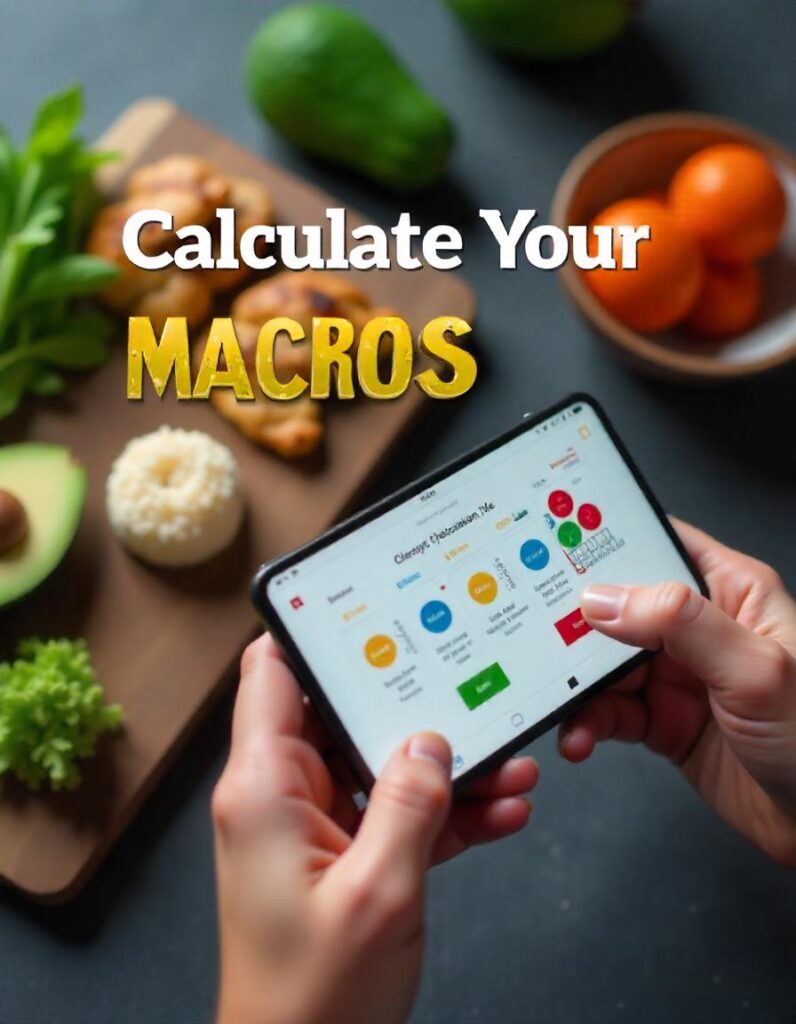Macro Nutrient Calculator
Calculate your ideal daily macronutrient intake based on your personal goals and activity level
Your Macro Nutrient Breakdown
Daily Calorie Needs
Protein
Carbohydrates
Fats
Nutrition Tips
How to Use This Calculator
Additional Resources
A free app to track your food intake and monitor your macro nutrients.
Another excellent food tracking app with detailed nutrient breakdowns.
Meal planning tool that creates meal plans based on your macro targets.
Comprehensive guide to understanding macro nutrients and their role in your diet.
Learn how to calculate macro and Macro Nutrient Calculator effectively with tools, tips, and examples for a healthy diet.
The Ultimate Guide to Macro Nutrient Calculators
In a world obsessed with fitness and health, everyone from weekend joggers to pro athletes wants to know: what should I eat and how much? That’s where macro nutrient calculators step in like a personal nutritionist in your pocket.
If you’ve ever wondered how to balance carbs, fats, and proteins or what those confusing labels on food really mean, you’re in the right place. Let’s break down macro and micro nutrients, explore how to calculate them, and figure out if those online calculators are actually worth your time.

What Are Macro Nutrients?
Macro nutrients are the nutrients your body needs in large amounts to function properly. Think of them as the fuel for your body.
Carbohydrates
Carbs are your body’s preferred energy source. Found in foods like bread, rice, fruits, and pasta, they convert into glucose which fuels your muscles and brain.
- 4 calories per gram
- Sources: grains, fruits, veggies, legumes
Proteins
Proteins are the building blocks of life. They’re responsible for muscle repair, hormone production, and keeping your immune system in check.
- 4 calories per gram
- Sources: meat, dairy, tofu, legumes
Fats
Fats often get a bad rap, but they’re vital for brain function and hormone production. Plus, they help you absorb fat-soluble vitamins like A, D, E, and K.
- 9 calories per gram
- Sources: nuts, seeds, oils, fatty fish
What Are Micro Nutrients?
Micro nutrients are needed in small quantities, but they play a huge role in keeping your body healthy.
Vitamins
These help regulate chemical processes in your body. For example:
- Vitamin C for immune health
- Vitamin D for bones
Minerals
Essential for building bones and making hormones. Key ones include:
- Calcium
- Iron
- Magnesium
Why Are Macro and Micro Nutrients Important?
Imagine trying to run your car on soda instead of gas. That’s your body without proper nutrients. Macros give you energy, while micros keep the engine running smoothly.
Lack of nutrients can lead to fatigue, poor concentration, muscle loss, and chronic health issues.
How to Calculate Macro Nutrients Manually
Calculating macros manually might sound like doing taxes without TurboTax, but once you get the hang of it—it’s doable!
Using the Harris-Benedict Equation
Start by calculating your Basal Metabolic Rate (BMR):
For men: 66.5 + (13.75 × weight in kg) + (5.003 × height in cm) – (6.755 × age in years)
For women: 655.1 + (9.563 × weight in kg) + (1.850 × height in cm) – (4.676 × age in years)
Finding Your TDEE (Total Daily Energy Expenditure)
Multiply BMR by your activity level:
- Sedentary (1.2)
- Lightly active (1.375)
- Moderately active (1.55)
- Very active (1.725)
- Extra active (1.9)
Setting Macro Ratios

Typical macro splits:
- 40% carbs / 30% protein / 30% fat
- 50/30/20 (for endurance)
- 30/40/30 (for weight loss)
Example: If your TDEE is 2000 calories:
- 800 calories from carbs → 200g
- 600 calories from protein → 150g
- 600 calories from fat → ~66g
How to Calculate Micro Nutrients
This is trickier, but worth the effort.
Common Micronutrient Recommendations
Use RDA (Recommended Daily Allowance) guides:
- Vitamin C: 65-90 mg/day
- Iron: 8 mg/day (men), 18 mg/day (women)
Using Food Databases and Labels
Use tools like:
- MyFitnessPal
- Cronometer
- Nutrition labels on food
Track individual vitamins and minerals based on your age, gender, and health goals.
What Is a Macro Nutrient Calculator?
A macro nutrient calculator is an online tool that automates the whole process. You plug in your height, weight, age, and activity level, and it spits out how many grams of carbs, proteins, and fats you need daily.
Best Online Macro and Micro Nutrient Calculators
Free Tools vs Premium Calculators
- Free: MyFitnessPal, IIFYM.com, Precision Nutrition
- Paid: RP Diet App, Avatar Nutrition
Top 5 Macro Calculators (With Pros & Cons)
- MyFitnessPal ✔ Easy to use ✖ Limited micronutrient tracking
- IIFYM.com ✔ Customizable ✖ Ads and upsells
- Cronometer ✔ Deep micronutrient data ✖ Interface can be overwhelming
- RP Diet App ✔ Great for athletes ✖ Subscription required
- Avatar Nutrition ✔ Coaching features ✖ US-focused food database
Step-by-Step: How to Use a Macro Calculator

- Visit the site (e.g., IIFYM.com)
- Input your age, gender, weight, height
- Select your activity level
- Choose your goal (lose fat, maintain, gain muscle)
- Get your custom macro split
- Start tracking daily intake
Are Macro Nutrient Calculators Actually Good?
Yes, as long as you understand their limitations. They offer great starting points but can’t predict your metabolism or health quirks.
Think of them like Google Maps—you still need to drive the car.
Energy-Yielding Macro Nutrients Explained
Only three macros give you calories:
- Carbs = 4 kcal/g
- Protein = 4 kcal/g
- Fat = 9 kcal/g
Alcohol gives 7 kcal/g, but it’s not considered essential.
Macro Adjustments for Fitness Goals
Bulking
Increase calories by 10–20%. Add more carbs and protein.
Cutting
Reduce calories, focus on higher protein to preserve muscle.
Maintenance
Balance macros to support weight and performance.
Macro Tracking Apps & Tools
- MyFitnessPal: Barcode scanner, community
- Lose It!: Simple UI, goal tracking
- Chronometer: Best for micros
- Carb Manager: Ideal for keto folks
Common Mistakes When Calculating Nutrients
- Ignoring portion sizes
- Overestimating activity level
- Not logging snacks or drinks
- Using inconsistent units (grams vs ounces)
Conclusion: Should You Use a Macro Nutrient Calculator?

Absolutely! If you’re serious about understanding your body, improving performance, or just eating better, a macro nutrient calculator is your best buddy.
But don’t treat it like gospel. Use it as a guide, and adjust based on your results, energy, and how you feel.
FAQs
1. Are macro nutrient calculators accurate?
They’re fairly accurate for estimates, but personal metabolism and lifestyle can change things.
2. Can I use a macro calculator for weight loss?
Yes! Choose a calorie deficit goal when setting up your calculator.
3. What’s the best free macro calculator?
MyFitnessPal and Cronometer are top choices depending on whether you care more about macros or micros.
4. Do macro calculators work for keto diets?
Absolutely. You can set custom goals like 70% fat, 25% protein, 5% carbs.
5. Is it okay to go over one macro but under another?
Occasionally yes, but try to hit your targets overall. Balance is key.
